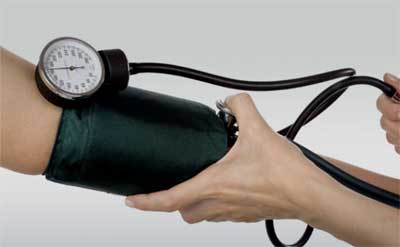Postural Hypotension: Symtoms, Causes, Diagnosis, Treatment
What is Postural Hypotension
Postural hypo tension or head rush is a type of hypo tension. It causes dizziness on standing from lying or sitting position. Usually, it happens when we raise our heads suddenly when the head is in the position below our heart. It is not any type of disease, but just a change the blood pressure and heart rate, which doesn’t seem normal due to a sudden change in position. In most of the cases, it resolves in a few seconds as it is mild.

Postural Hypotension
This condition is common in older people, but individuals of any age may be affected by it.
If postural hypo tension becomes chronic it may indicate some serious underlying health issue. If in the case you lose consciousness better meet your doctor as soon as possible.
How does Postural Hypo tension Occur
Postural hypotension is caused when the blood-pools due to gravity in the legs. This results in compromise of venous output and the cardiac output as well as arterial pressure falls. This causes the insufficient supply of the blood to the brain. When we change the body posture there is a fall in the blood supply to the brain, resulting in the shortage of oxygen to the brain. This results in lightheadedness and dizziness. Sometimes consciousness also gets loose and this condition is called postural hypotension.

Postural Hypo tension Occur
What are the Symptoms of Postural Hypo tension
When there is a shortage of enough blood supply to the brain it begins to shut down. Following are the symptoms of postural hypo tension.:
Dizziness, lightheadedness, weakness, fainting, blurred vision, tremulousness, palpitation, vertigo, sweating, pale look, confusion, anxiety, poor concentration, blurred vision, nausea
These symptoms are short lived for just a few seconds. In some of the cases, there may be just a couple of the symptoms. Slowly the body adjusts to the changed position and the symptoms subside, but it is better to lie down or sit to prevent from passing out
Factors Responsible for Postural Hypotension
Postural hypotension is actually caused because of the body’s interruption to counteract the low blood pressure. This is several potential reasons that may cause it. These causes affect either the blood supply to our brain or it may affect other the systems as well.
Below are the secondary causes
1. Hypovolemia
2. Dehydration-Due to diarrhea, sweating a lot or vomiting
3. Certain medications- such as antidepressants or Beta blockers
4. Injury
5. Certain diseases- such as diabetes, peripheral neuropathy, Addison’s disease, heart problem, parkinsonism, multiple system atrophy, thyroid etc.
What is the Risk Factor of Postural Hypotension

Risk Factor of Postural Hypotension
1. Age- It is more common in older people.
2. Medications- Medications such as alpha blockers, diuretics, beta blockers, calcium channel blockers, anti-depressants, nitrates and muscle relaxants.
3. Certain diseases. Certain diseases of the heart, nervous system diseases, and endocrine issues.
4. Exposure to extreme heat.
5. Chronic bed rest
6. Pregnancy
7. Alcohol
What is the Diagnosis of Postural Hypotension
The first physical examination is conducted and blood pressure is a note. Tests that are recommended are a blood test, electrocardiogram, echocardiogram, stress test, tilt table test and Valsalva maneuver.

Diagnosis of Postural Hypotension
Treatment of Postural Hypotension
First of all underlying cause is identified and treatment is carried accordingly. Possible treatment are:

Treatment of Postural Hypotension
1. Stopping medication if they cause.
2. Abdominal binders and compression stocking
3. Fluid replacement
4. Certain medications- such as fludrocortisone.
What are the Lifestyle Modifications needed to Prevent Postural Hypotension
1. A Little increase in common salt intake.
2. Small meals at regular small intervals.
3. Lots of fluids.
4. Exercising calf muscles before sitting.
5. Avoided bending at the waist.
6. Cross your thighs as dizziness begins. This will prevent you from falling.
7. Avoid sitting crossed legged.
Do not take postural hypotension lightly. If postural hypotension is frequent do meet your doctor as it may be due to some underlying cause.














































